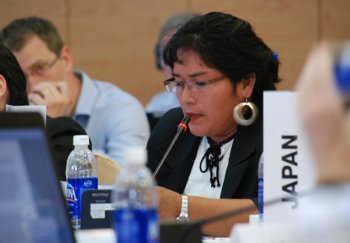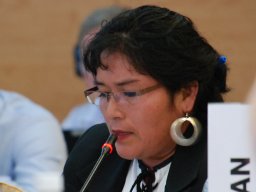
Peru is emerging as one of the key laboratories for a big experiment to save the world’s remaining tropical forests known as REDD – Reducing Emissions from Deforestation and forest Degradation. As the country with the fourth largest area of rainforest (following Brazil, DRC, and Indonesia) and one of the most bio-diverse regions on the planet, the stakes are high.
Many indigenous groups around the world – the principle “owners” of the world’s rainforests – have viewed REDD with a suspicious eye. Is this just another benign sounding means to transfer control of resources out of local hands? Is it a “get out of jail free” card for the world’s main greenhouse gas emitters? Beyond being a threat to indigenous peoples’ rights, how might the REDD/climate discussions be turned to indigenous peoples’ advantage?
In the Peruvian context – including historic injustices around territory, current incursions of extractive actors like oil companies, loggers, and palm oil magnates, and acrimony between indigenous leaders and the government – implementing schemes like REDD ostensibly to protect the rainforest are that much more tricky.
In recent years, Amazon Watch partner and Peru’s premier Amazonian indigenous federation AIDESEP has been pioneering a form of climate jujitsu, leveraging the government’s search for climate financing from the international community as an opportunity to give decades old demands new life. Over the last year, they have raised concrete proposals (English translation here) before the multi-lateral development banks, like the World Bank and the Inter-American Development Bank, that are positioning themselves to be major channels of money to deal with climate issues.
In late March, AIDESEP Vice-president Daysi Zapata traveled several days from Lima to attend a World Bank REDD meeting in Vietnam (technically the meeting of the Forest Carbon Partnership Facility, or FCPF). There, she and her advisors carried out a lobbying blitz amongst the WB donor countries with the support of ally groups like Forest Peoples Programme and Bank Information Center. As she had done at previous World Bank meetings in Guyana and the U.S., Daysi made a brief presentation before the FCPF’s entire Participants Committee.
The initial feedback from the meeting is that the Peruvian government has conceded some of AIDESEP’s demands. Among other commitments, indigenous REDD working groups will be established at regional and national levels, antiquated Peruvian land laws will be revised and (hopefully) brought into line with international norms, and on the order of $1 million will be dedicated to pending indigenous land titling claims in northern Peru.
Assuming the government follows through on these commitments, they represent real progress for AIDESEP’s campaigns for indigenous rights. Given that the Peruvian elections are around the corner, ongoing efforts to hold the government’s feet to the fire are going to be crucial.
And these commitments are really just the tip of the iceberg in terms of the totality of AIDESEPs demands. They estimate that 20 times as much funding would be necessary to complete the needed land titling for the hundreds of indigenous communities that are unrecognized, or recognized but untitled, or titled but in need of an expansion. AIDESEP also continues to demand the recognition of five new territorial reserves for uncontacted indigenous brothers and sisters.
Additionally, there are still many contentious issues to deal with. The very role of the carbon market is still in question. On one hand, indigenous federations and collectives have repeatedly and explicitly rejected the carbon market as a “false solution” to climate change. AIDESEP, in their proposal for an “indigenous REDD”, includes as one point keeping indigenous territories outside the purview of carbon markets. Yet for the multilateral development banks, the carbon market is central to their strategies and conception of REDD. How this all plays itself out remains to be seen.
For more about Peru, REDD and indigenous rights please see the piece I wrote for the latest edition of REDD Alert, published by Bank Information Center.














